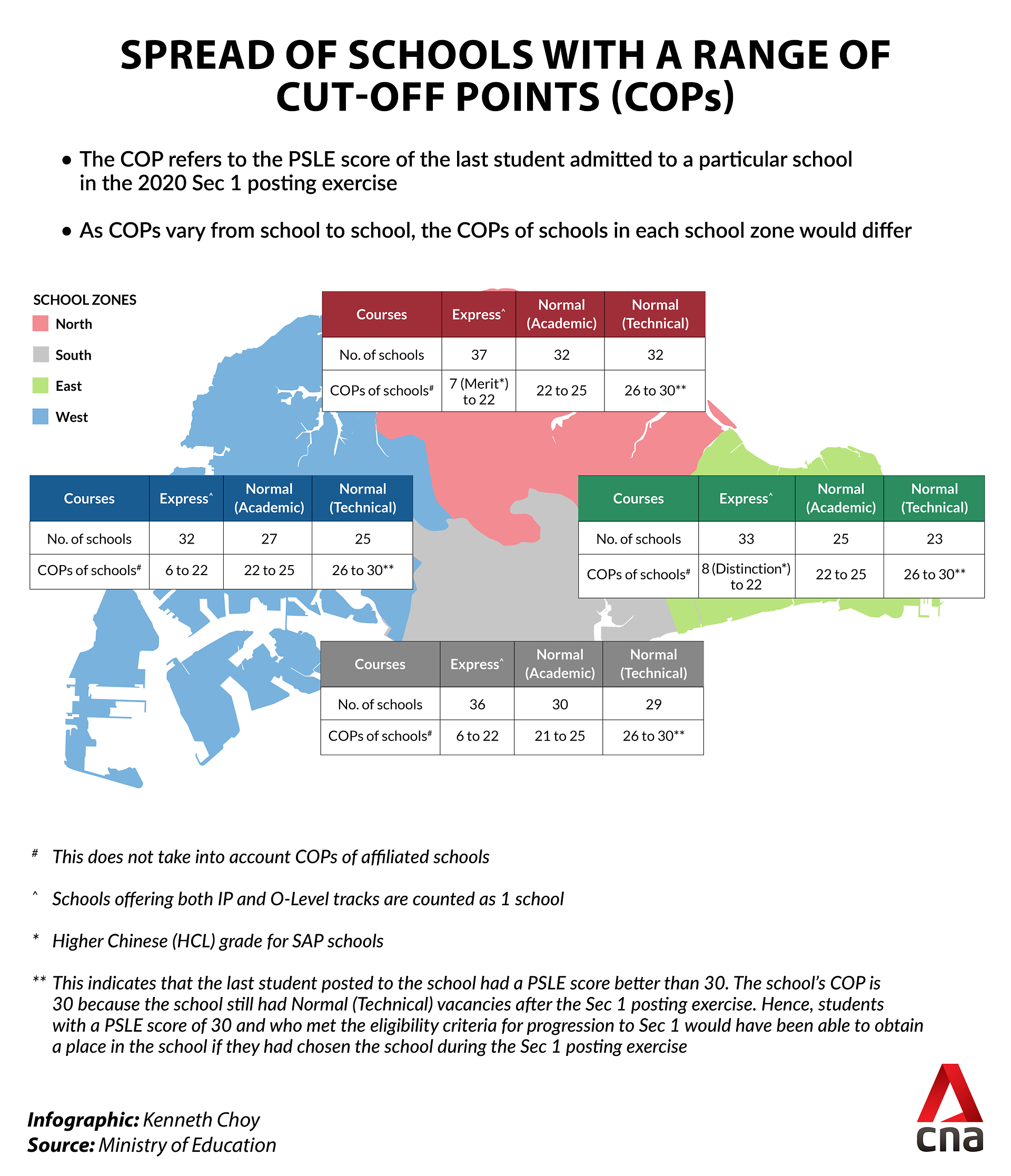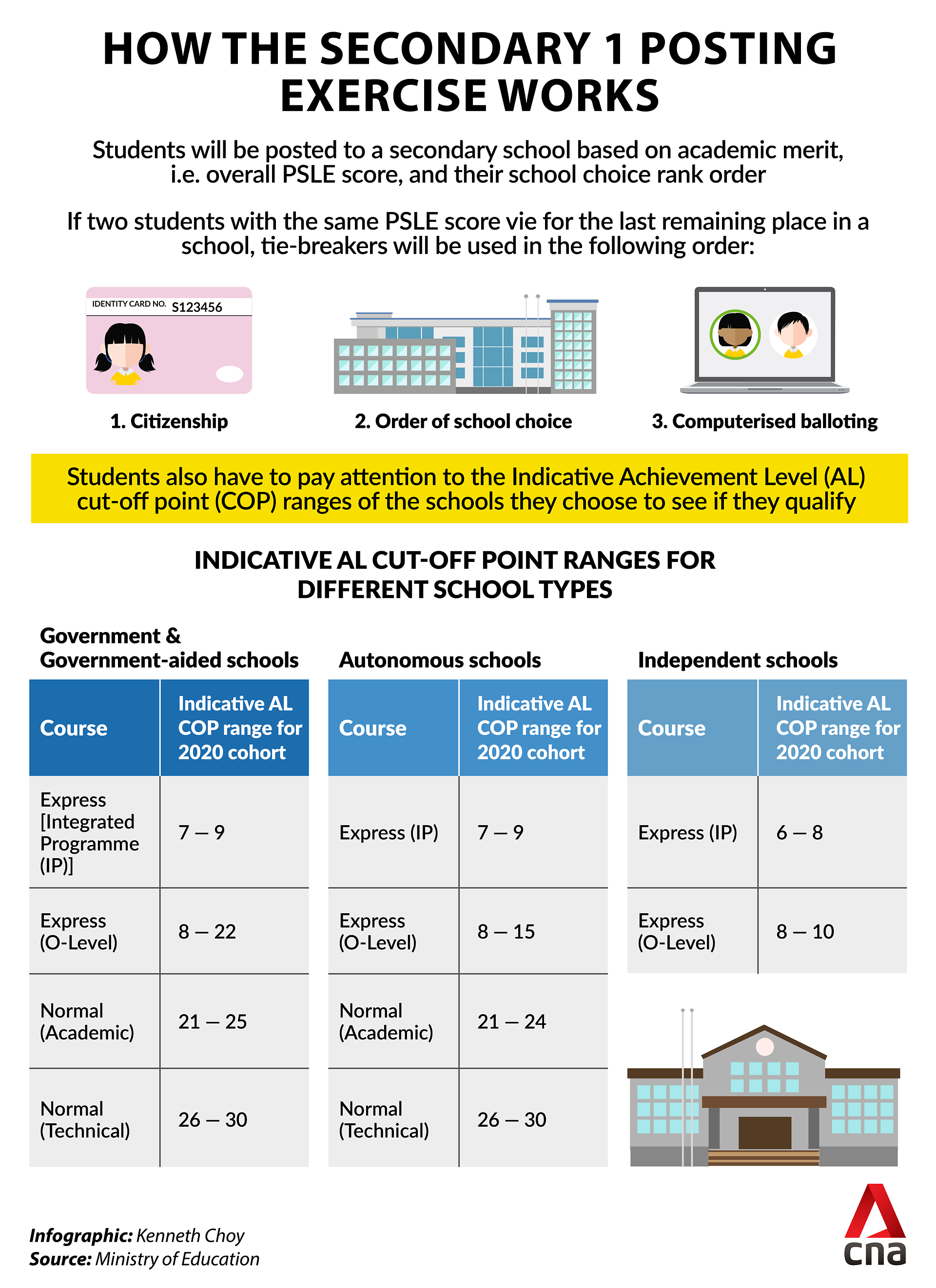- Confused and full of doubts about the new PSLE scoring system? Find out some misconceptions and understand more about the new scoring here!
The ministry of education has implemented the new PSLE scoring system and it will be effective from 2021 onwards. This year’s primary 6 students will be the first batch of students undergoing this change.
There have been some frequently asked questions by students and parents. Let’s also debunk some myths that surround the new scoring system.
Read also: All about the New PSLE scoring system and how it works
Frequently Asked Questions:
Q: If my child meets the school’s indicative cutoff score, will my child be guaranteed a spot in the school?
A: Meeting the indicative cut off point does not guarantee a child’s admission. The indicative cut-off point varies from year to year and it is the score of the last student that was admitted into the school of the previous cohort.
In the event where two students are vying for admission with the same PSLE score, there will be tie-breakers to determine which child gets the spot.
The tie-breakers are as follows:
- Citizenship
- Choice order of school
- Computerized balloting

Source: CNA
Q: How should parents and students choose a secondary school when the indicative cut-off points for many schools are the same?
The main purpose of the new PSLE scoring system is to put less emphasis on academic results, hence the Ministry of Education encourages parents and students to look beyond the schools’ cut-off points.
The new scoring system has resulted in the scores being less differentiated with only 29 possible aggregates.
Read also: How to choose the RIGHT secondary school after PSLE.
Hence, it is encouraged that parents and students consider their choice of schools based on the student’s interest, strengths and future aspiration. Find out how the school’s culture and environment are able to support the student’s development moving forward.
With one of the tie-breaker factors being the choice order of schools, the Ministry of Education encourages parents and students to make careful decisions when indicating the order of their school choices.
Q: How were the indicative PSLE cut-off ranges for schools decided?
A: The indicative score ranges are the scores of the first and the last student who would be admitted into each school under the new scoring system, based on the 2020 cohort’s results and school choice patterns.
The PSLE score of the last student admitted into the school is referred to as the school’s cut off point.
The ministry of education simulated each student’s individual subject score in terms of Achievement Level based on their raw subject scores then adding up the AL scores to form the student’s total PSLE score.

Source: CNA
Myths Debunked regarding the New PSLE scoring system
Myth 1
| The changes to the PSLE scoring system will make PSLE more difficult. | Fact: The new scoring system will not affect the curriculum and assessment standards of the PSLE. |
Myth 2
| The new passing mark for PSLE subjects is 65 based on the new scoring system. | Fact: There is no passing or failing mark for the PSLE subject or the PSLE as a whole!
The PSLE scores serve as an indication for students to guide students to take subjects in secondary schools that best suit their educational needs and ability at the point of entry to a secondary school. |
Myth 3
| The scoring bands under the new system are uneven and wider at the middle and lower ranges, thus disadvantaging the “average” student. | Fact: The AL bands are designed to reflect a student’s level of understanding and mastery of the particular subject while ensuring meaningful S1 Posting outcomes.
The upper AL bandsThe upper bands have a narrower raw mark because these mark ranges are needed to avoid having too many students achieving the same PSLE score, which may result in more tie-breaking situations. The middle to lower AL bandsThese mark ranges are more widely distributed, and these wide mark ranges are sufficient to serve as a good indication of a student’s understanding and readiness for their next course of study. |
Myth 4
| Fewer students will be eligible for the Express course with the changes to the PSLE scoring system | Fact: The proportion of students qualifying for different courses under the new scoring system will remain largely similar to the T-score system.
Students will still be able to qualify for the respective courses as long as their PSLE scores meet the placement requirements. |
Myth 5
| My child will need to take a subject at the N(A) level as long as he/she gets AL 6 to AL 8 for that subject. | Fact: Your child will take all the subjects at the Express level as long as he/she qualifies and is admitted to the Express course. |
Myth 6
| The new PSLE scoring system will cause more students to undergo balloting. | Fact: Under MOE’s simulations, about 9 in 10 students will not need to undergo balloting.
The order of tie-breakers:
Computerized balloting will only happen if more than one student has the same PSLE score, citizenship and choice order of schools. |
Eleen Tan
I am currently a full-time student studying at a local university in Singapore while freelancing as a writer. I enjoy writing and sharing useful education-related tips with my fellow studying peers. During my leisure time, I enjoy doing creative arts and volunteering work. I am passionate about sharing my experience as a student! ☺






